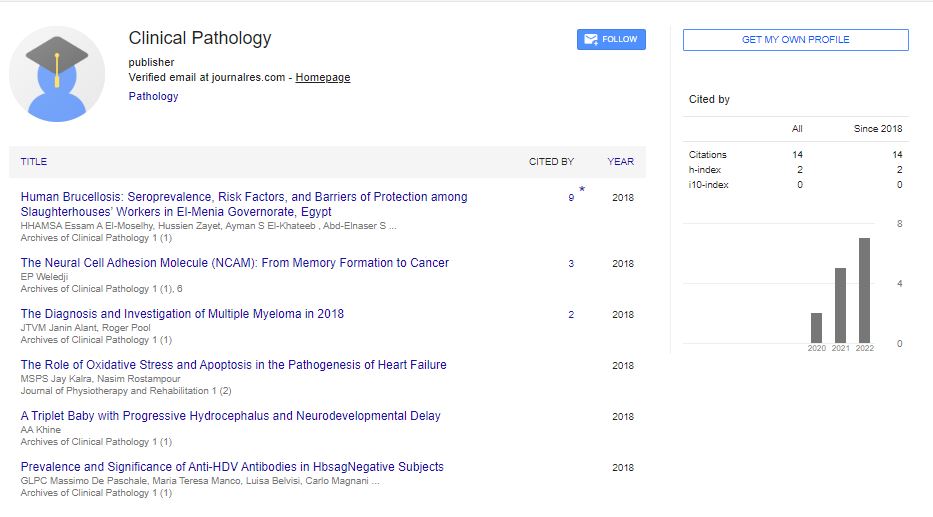Emerging virulence of soil borne diseases in maize and challenges for crop improvement program
Vimla Singh
CCS Haryana Agricultural University, India
: Arch Clin Pathol
Abstract
Objectives: Maize, (Zea mays L.) is the third most popular cereals in India widely adapted for cultivation in diverse agro ecologies with an annual production of approximately 24.2 million tonnes over 9 million hectares under cultivation. Maize industry is rising every year in terms of trade and consumption. In the global climate change scenario vulnerability of maize soil borne diseases, viz., banded leaf and sheath blight (BLSB), maydis leaf blight (MLB), post flowering stalk rot (PFSR) and charcoal rot caused by Rhizoctonia solani, Bipolaris maydis, Fusarium verticilloides and Macrophomina phaseaeolina respectively, are a serious concern for maize program in India. The disease scenario is changing every year due to emergence new races of the pathogens and changing climate.
Methods: Race profiling of the pathogens was done from 2014 - 2018 from the disease hotspots in India and virulence of the pathogens was tested on several inbreds/hybrids of maize. The disease severity was recorded and yield losses were estimated. The virulence pattern of the pathogens was examined and the pathogen with most variable and devastating disease pattern among the four soil borne diseases under investigation was characterized for sensitivity against fungicides, botanicals and biocontrol agents.
Key findings: Among the four soil borne diseases investigated, BLSB incited by R. Solani showed a sharp increase in yield loss in time and space. The pathogen showed marked variability in morphological and molecular data generated from the hotspots and variable sensitivity to selected fungicides, botanicals and biological control agents. None of the tested inbreds/ hybrids showed resistance for the disease.
Conclusions: Development of efficient marker platforms (SNPs) as biotechnology tools for accurate profiling of the new races/pathotypes will be effective in deriving evolutionary linkages of the fungus and its potential to survive in soil. In addition epidemiological data must be generated to provide a unique baseline for monitoring changes in the population dynamics of the pathogens across the maize cropping zones of India. The exploration of phytobiomes for effective biointensive management of Rhizoctonia sp. can be a potential cost effective approach for the management of disease.
Biography
Vimla Singh has completed his Ph. D in 2003 at the age of 28 years from Deen Dayal Upadhayay Gorakhpur University Gorakhpur, Uttar Pradesh in Botany. She is presently Woman Scientist-DST, at CCS Haryana Agricultural University, Regional Research Station, Karnal-1320001, Haryana, (India). She has been associated with Maize research since 2006 and has characterized virulence of Rhizoctonia solani for the maize cropping zones of India. She has investigated host pathogen interaction as affected by dsRNA and plasmids in Rhizoctonia sp. complex. Currently she is investigating phytobiome mediated resistance against Rhizoctonia diseases in maize. She has published more than 30 papers in reputed Journals; 3 Book chapters, 3 books and several popular articles. She is also editorial board member for some National Journals.
E-mail: vspathomaize@gmail.com
 Spanish
Spanish  Chinese
Chinese  Russian
Russian  German
German  French
French  Japanese
Japanese  Portuguese
Portuguese  Hindi
Hindi 